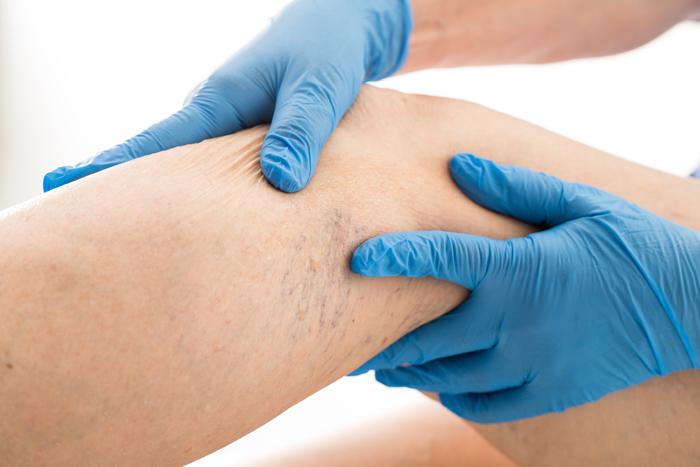Venous Insufficiency Treatment in C-scheme, Jaipur
Veins carry deoxygenated blood from different parts of your body back to the heart. Veins that are close to the skin’s surface are called superficial veins. Veins in the muscles of your arms and legs are called deep veins. Venous diseases are common and usually affect people above the age of 50. Venous diseases include disorders and conditions like blood clots, chronic venous insufficiency, deep vein thrombosis, phlebitis, varicose, and spider veins.
What are venous diseases?
Venous diseases are conditions in which veins are damaged. Damaged veins act as obstacles in the circulatory system. This causes the blood to start collecting and flowing backward when the muscles relax. Valves in the veins are supposed to stop the blood from flowing backward. But this does not happen when they are damaged. The valves do not fully close due to damage to the veins allowing the blood to leak backward.

This creates unnecessary high-pressure buildup in the veins causing them to swell and twist and leading to sluggish blood flow and risk of blood clotting.
What are the types of venous diseases?
Venous diseases include:
- Blood clots- Blood clots are thickened clumps of blood that help the body stop bleeding when you get injured or cut. However, not all clots are helpful. If your blood clots too easily and doesn’t dissolve when the cut heals they may cause blockage in blood flow in your veins and arteries. Blood clots can form in veins of internal organs, the brain, kidneys, or lungs.
- Deep vein thrombosis- Deep vein thrombosis or DVT is a condition caused due to a blood clot that is formed in your deep veins, usually in the legs. It can cause pain and swelling in the legs.
- Superficial venous thrombosis- Also known as phlebitis, in this condition the blood clot forms in the veins that are close to the surface of the skin.
- Chronic venous insufficiency- When the veins have a problem in sending the blood back from different parts of the body to the heart, it is called venous insufficiency. It causes the blood to pool, swelling, pressure, ulcers, and discoloration of the skin on the legs.
- Varicose and spider veins- They are abnormally enlarged veins caused due to weakened blood vessel walls.
What are the symptoms of venous diseases?
Symptoms depend on the type of venous disease but a few common symptoms are:
- Pain, swelling, or inflammation along the vein
- Pain in the legs during movement even if it is a minor movement
- Heaviness and cramps in the legs
- Blood clots
- Fatigue
- Swelling of ankles and legs
- Discolouration of skin
When should you consult a doctor at Apollo Spectra, Jaipur?
You should consult the best doctor in Jaipur if you have persistent pain and swelling in the veins that do not go away. If any of the above-mentioned symptoms persist, please call your doctor immediately.
Request an appointment at Apollo Spectra Hospitals, Jaipur
Call 1860 500 2244 to book an appointment.
What are the causes and risk factors of venous diseases?
- Slowing down of blood flow due to immobility or decrease in body movement. It is common in recovering patients who are bed-ridden.
- Injury to the blood vessel caused due to trauma, injury, or infections
- Birth control pills and hormonal therapy may increase the risk of blood clots forming in women
- Obesity increases the risk of venous diseases.
How can you prevent venous disease?
Doctors can recommend lifestyle changes to lower the risk of venous diseases for you. These changes may include regular exercising and walking, keeping legs elevated for some time, and taking breaks from sitting for long durations. Walk in-between the long period of staying still or sitting. Wearing low-heeled shoes can help too. Even the slightest movement is recommended in recovering patients.
Symptoms might not always be visible but if there is persistent pain and swelling in the veins you should contact your doctor immediately. It can lead to complications and sometimes life-threatening complications like pulmonary embolism.
It means the blood clots in your legs and, if not treated, it can be seriously painful and disabling.
You can do so by exercising and running regularly and also using compression tights. You can consult your doctor as well for more options.
Symptoms
Our Top Specialities
NOTICE BOARD
CONTACT US
CONTACT US
 Book Appointment
Book Appointment


.svg)
.svg)
.svg)
.svg)








